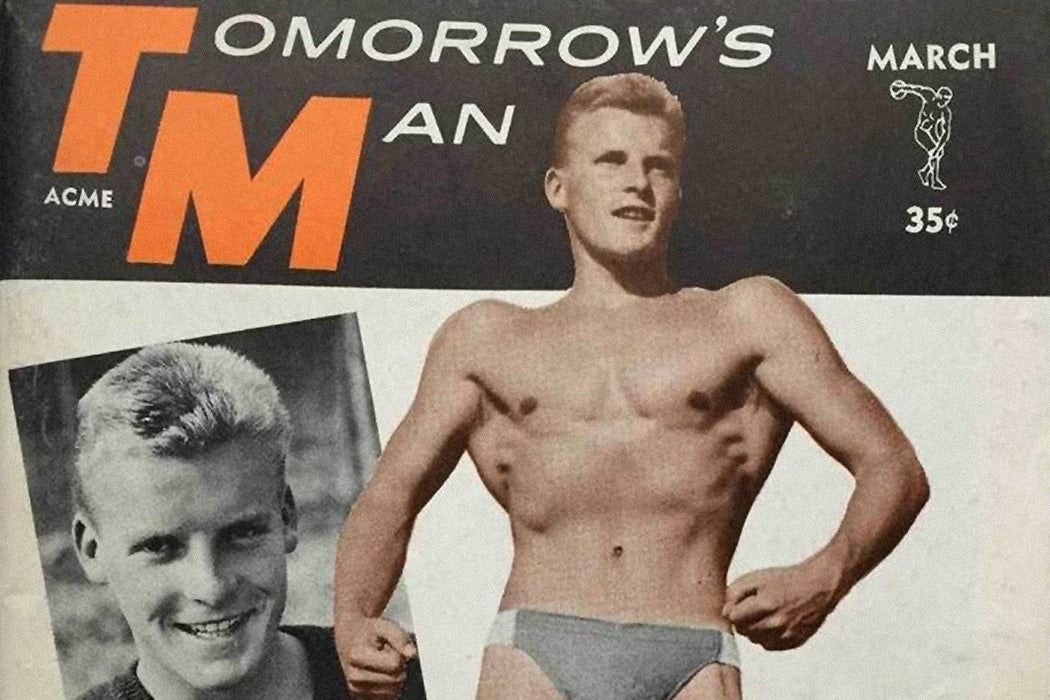There was a gay commercial culture before there was the gay political culture in the United States. While there were only a few thousand members of the Mattachine Society, founded in 1950 to advocate for civil rights for homosexuals, there were tens, if not hundreds, of thousands who subscribed to physique magazines. Many also ordered items through the mail from gay entrepreneurs, much to the panic of authorities.
For historian David K. Johnson, gay mass consumption between 1945 to 1969 was “a means of sexual self-identification,” and a way “for gay men to understand themselves as belonging to larger community.”
But these publications and mail-order businesses were more. The people who produced them used “an explicit language of freedom and rights in their open challenge to censorship laws,” writes Johnson. This “was more anti-establishment and less assimilationist than the mainstream political groups of the time.” And not surprisingly, Johnson continues, “the [gay rights] movement’s first legal victories were for the right to consume these products.”
At the center of this consumerism were physique magazines, which featured photographs of bodybuilders and male models. These had emerged from the physical culture/body culture movement, which advocated for a toughening up of “native-born” white males beginning at the turn of the twentieth century. From the beginning, male desire for male bodies played a role in the movement. Bernarr Macfadden, who posed for pictures himself and wrote things like The Virile Powers of Superb Manhood (1900), early on expressed anxiety about “mincing youths” ogling the contents of his Physical Culture magazine.
By the late 1950s, mainstream fitness magazines like VIM, Strength & Health, and Your Physique had a lot of competition, some of it obviously aimed for what was disparaged as the “homo” market. The editors of VIM and Strength & Health railed against such “degeneracy” (and competition), while Congress, the US Post Office, and local District Attorneys all joined in the crusade against photos deemed obscene.
Photographers, publishers, and consumers could be prosecuted for connections to such “obscenity.” Between 1961 and 1968, the Post Office recorded 4,979 arrests and 4,095 convictions for obscene mail. In a much-publicized 1960 case, Smith College’s renowned literary critic Newton Arvin was branded as a “lewd person” and prosecuted for possessing copies of the likes of Adonis, Tomorrow’s Man, Grecian Guild Pictorial, and Trim.
The mass mailing of physique magazines in discrete brown paper covers was not, however, deterred. Johnson gives an example of a work-around: a small circle of Pensacola, Florida, subscribers had a straight woman friend pick up their mail at a Post Office box registered to a fictitious “Emma Jones.”
Magazines were only part of this burgeoning consumer culture. Lloyd Spinar and Conrad Germain’s founded Direct Services, Inc., in Minneapolis in 1963. Their bread and butter was an “extensive series of physique magazines featuring the first male frontal nudes” and titles like Butch and Tiger. But the company’s Vagabond catalog also included records, jewelry, cologne, clothing, greeting cards, and books, including directories to gay bars and gay travel guides.
Spinar and German made a lot of money via mail order. In 1967, DSI’s 5,700-square-foot Minneapolis publishing plant—where 50,000-copy runs weren’t unusual—was raided. The two principals were changed with twenty-nine counts of sending lewd material through the mail.
Weekly Newsletter
In a landmark decision, a federal judge agreed that the intended market might be a “deviant group,” but the accused were not guilty. “The rights of minorities expressed individually in sexual groups or otherwise must be respected,” the judge wrote. Spinar and Germain interpreted ruling as permission to publish full frontal nudes with the caption “This photograph was declared NOT obscene in a Federal Court.”
When The Los Angeles Advocate began publication two months after the DSI decision, its cover story was about this legal victory. In the 1970s, the renamed The Advocate became the nation’s most prominent gay and lesbian news magazine—but its circulation was “still less than DSI’s Butch a decade earlier.”







